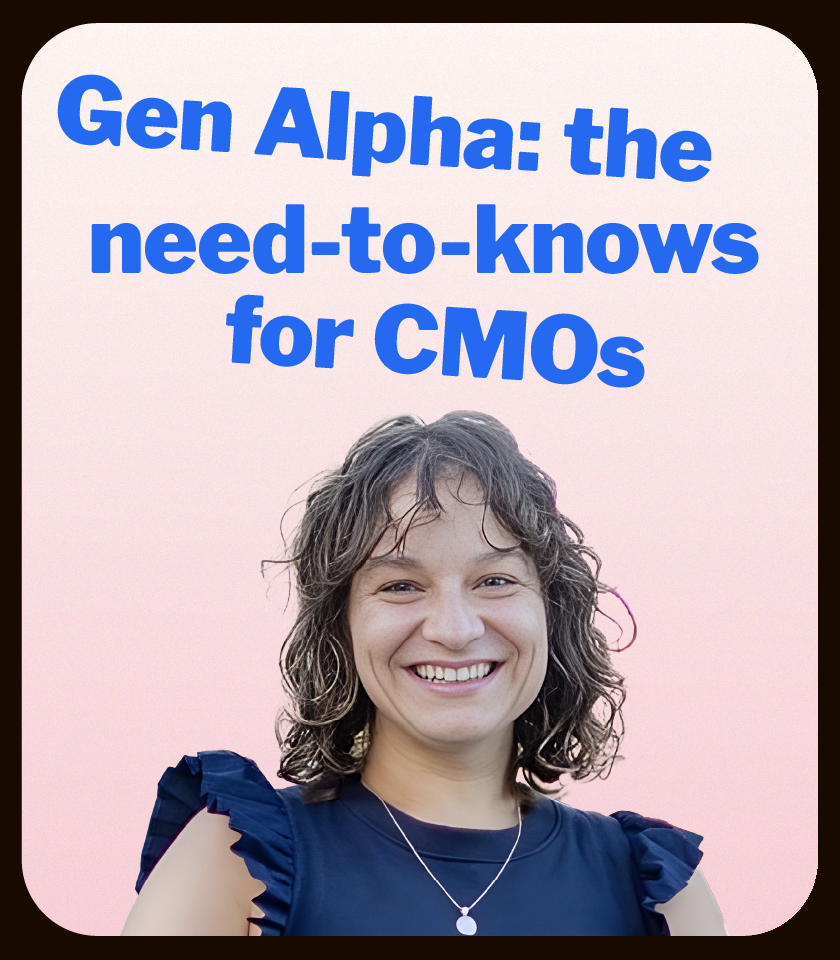Very few things have been in the spotlight of internet scrutiny as much as corporate Pride has, especially this year. With elections occurring both in the U.S. and across the globe, tensions and attitudes regarding Pride have skyrocketed to an all-time high. In response to rising unease, many brands have begun to pull back on LGBTQ+-focused initiatives.
Pride collections from big brands such as Target and Nike are smaller, scaled back, and more reserved this year. And at large, brands are removing DEI roles amidst concerns for the bottom line. As brands pull back, they undermine the efforts they have put into supporting Pride, making it clear that their support only goes so far.
These actions aren’t going unnoticed. Audiences are rightfully more discerning and vocal, choosing to support brands whose celebration of Pride goes beyond a rainbow t-shirt. In fact, 64% of LGBTQ+ Americans like brands that are willing to get involved in social issues, compared to 46% of the general population. This is why it is important, now more than ever, for brands to take a positive stance backed by year-round support for LGBTQ+ rights.
Here are 3 brand recommendations for authentic support during Pride Month and beyond:
1. Put your money where your mouth is.
It’s not enough for brands to just change their logo and banner image for Pride. Consumers are looking for brands to show up authentically for the LGBTQ+ community. They’re looking for something genuine and meaningful, such as a donation to an organization, special community events, and more. One of the best examples we’ve seen is from Abercrombie, which donated $400,000 to the LGBTQ+ charity The Trevor Project and released a line of Pride clothing and accessories. This approach, rather than donating a portion of proceeds, makes Abercrombie stand out from other companies.
Another company that drew our attention is Procter & Gamble. The company partnered with iHeartRadio for a virtual concert featuring prominent LGBTQ+ artists called “Can’t Cancel Pride.” The concert recognizes people and organizations that have made strides in advancing LGBTQ+ equality. The virtual concert is free to attend, making it accessible to those who might not otherwise be able to attend in person. P&G is showing that brands should shine a light on creators, activists, and artists who represent the communities they are trying to support.
2. Make sure to have a community management plan in place.
No matter what you post during Pride, you’re going to receive feedback, whether it is positive or negative. Be sure to prepare your community manager and have an FAQ in place for handling inquiries, negative comments, and, of course, positive responses!
UGG has been dubbed the “Bud Light of 2024” as audiences call for a boycott following the brand’s Pride campaign featuring non-binary model Alok Vaid-Menon. UGG hasn’t backed down on its campaign across social platforms, especially on Instagram. It will be worth watching how the brand reacts over the course of the month and during the rest of the year.
3. Celebrate Pride all year.
While June may only be 30 days, it’s not enough to celebrate the LGBTQ+ community for just one month. If a brand is genuine about its care for the community, it should be sharing content and support throughout the year.
One of our favorite examples of this is Absolut. Absolut has built Pride into its company image with genuine support year-round. The brand first advertised in LGBTQ+ magazines in the '80s and has partnered with various LGBTQ+ leaders and icons, including the designer of the original Pride flag. Absolut has established itself as part of the community through its unwavering support of LGBTQ+ bars and spaces year-round.
Some of the best brand examples we’ve seen this June take a variety of approaches, but each shows that brands can support Pride by doing more for the community. Today, support is more important than ever, so brands have more opportunities to create genuine change for their audiences.
If you are thinking about how your brand might show up for the LGBTQ+ community, here are some guiding questions to consider:
- What’s your motivation?
- What impact do you want to have?
- Are you able to support what you share through planned actions, donations, or events?
- Are you using inclusive language?
- Do you support other minority groups and dedicated months/holidays (e.g., Black History Month, AAPI Month, etc.)?
- What’s your year-round, 365-day plan to support Pride/the LGBTQ+ community?







